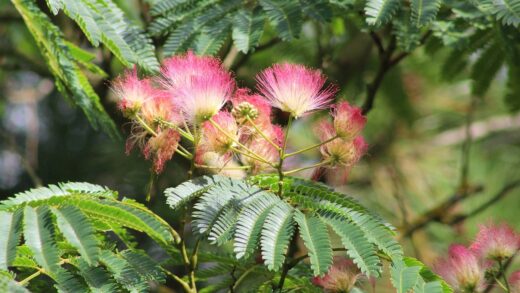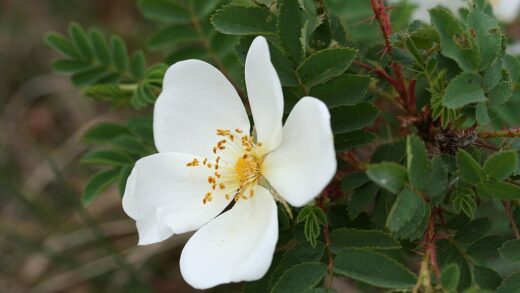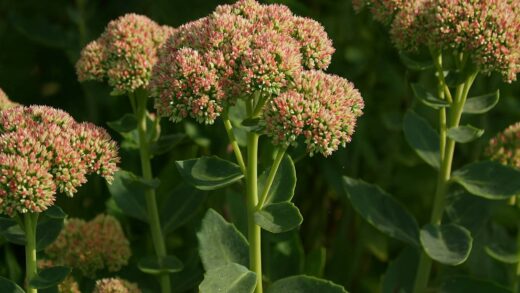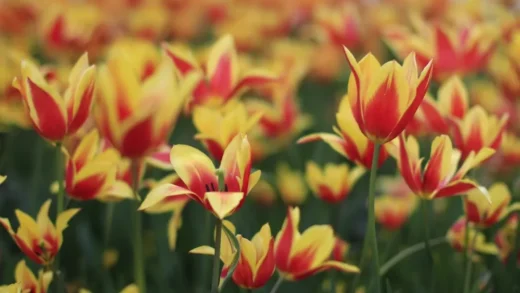Despite its reputation as a hardy and low-maintenance perennial, Hosta ventricosa is not entirely impervious to the challenges posed by various diseases and pests. For the dedicated gardener, maintaining the pristine beauty of its lush foliage requires a vigilant and proactive approach to identifying and managing these potential threats. The most common adversaries are voracious slugs and snails that can disfigure the leaves overnight, but other pests and a range of diseases can also compromise the plant’s health and aesthetic appeal. Understanding the life cycles and habits of these pests, as well as the environmental conditions that favor certain diseases, is the first step toward effective and environmentally responsible management. By implementing integrated strategies that combine cultural practices, physical barriers, and targeted treatments, it is possible to keep these problems in check and ensure the ovate-leaved hosta remains a magnificent centerpiece in the shade garden.
The challenges faced by Hosta ventricosa can be broadly categorized into two groups: damage caused by invertebrate pests and ailments caused by pathogens such as fungi and viruses. Among the pests, slugs and snails are by far the most ubiquitous and damaging, their nocturnal feeding leaving behind a trail of ragged holes and silvery slime. In certain regions, deer and rabbits can also pose a significant threat, capable of consuming an entire plant in a single visit. Less common, but still notable, are insects like vine weevils and cutworms that can damage the roots and crown of the plant.
On the disease front, hostas are most susceptible to fungal infections, which thrive in the cool, moist, and often shaded environments where these plants grow best. Issues like anthracnose, rust, and crown rot are often linked to poor air circulation, overhead watering, and debris left around the base of the plants. Viral diseases, most notably Hosta Virus X (HVX), represent a more serious threat as they are incurable and can spread throughout a collection. Prompt identification and removal of infected plants are critical to prevent widespread contamination.
Effective management of these issues relies on an integrated pest management (IPM) approach. This strategy emphasizes prevention and monitoring, prioritizing the least toxic control methods first. It involves creating a healthy growing environment that makes plants less susceptible to attack, using physical barriers and manual removal, encouraging natural predators, and resorting to chemical controls only when absolutely necessary. By adopting this holistic view, gardeners can protect their hostas while also promoting a balanced and healthy garden ecosystem.
Common invertebrate pests
The most significant battle for nearly every hosta grower is the one waged against slugs and snails. These gastropods are relentless in their pursuit of the tender, moist leaves of Hosta ventricosa. They are most active during damp weather and at night, using their rasping mouthparts to chew irregular holes in the leaves, which can quickly turn a perfect specimen into a tattered mess. The silvery slime trails they leave behind are a clear sign of their presence. Management requires a persistent and multi-faceted strategy to reduce their numbers and protect the plants.
More articles on this topic
Cultural controls form the foundation of slug and snail management. Since they thrive in damp, dark places, it is important to eliminate their hiding spots. Remove any unnecessary debris, rocks, or boards from around the garden beds. Improving air circulation by giving plants adequate space can also help the soil surface dry out more quickly, making the area less hospitable. Watering in the morning rather than the evening ensures the foliage and soil surface are dry by nightfall, when these pests are most active.
Various physical and chemical controls can also be employed. Hand-picking slugs and snails by flashlight at night can be surprisingly effective in small gardens. Barriers such as a ring of crushed eggshells, diatomaceous earth, or copper tape placed around the base of the plant can deter them. Beer traps, consisting of a shallow dish of beer sunk into the ground, are a classic method for luring them to their demise. For more severe infestations, baits containing iron phosphate are a popular and effective option that is considered safer for pets, birds, and other wildlife than older metaldehyde-based baits.
While slugs and snails are the primary culprits, other pests can occasionally cause problems. The larvae of the vine weevil can be particularly damaging as they feed on the roots and crown of the plant below the soil surface, causing the plant to wilt and die. The adult weevils are nocturnal and chew characteristic notches in the leaf margins. Controlling the larvae is key, and this can be done by applying beneficial nematodes to the soil in the autumn or spring. These microscopic organisms seek out and parasitize the vine weevil larvae, providing effective biological control.
Vertebrate pests
In many rural and suburban gardens, the most destructive pests of Hosta ventricosa are not insects or mollusks, but mammals. Deer, in particular, have a strong affinity for hostas, often referring to them as “deer salad.” A single deer or a small group can graze an entire bed of mature hostas down to the ground in a single night, leaving only the tough flower scapes behind. The damage is unmistakable, characterized by the ragged, torn edges of the remaining leaf stalks, as deer lack upper incisors and must rip the vegetation.
More articles on this topic
Preventing deer damage is notoriously difficult, and the most reliable method is exclusion. A sturdy fence at least eight feet high is the most effective way to keep deer out of a garden, although this is not always a practical or aesthetically pleasing solution. In unfenced areas, individual plant cages or netting can be used to protect prized specimens, but this can detract from the ornamental value of the plant. Strategic planting, placing more vulnerable plants like hostas closer to the house or in areas with high human activity, can sometimes offer a degree of protection.
A wide variety of repellents are available, which work by creating an unpleasant taste or smell that deters the deer from feeding. These can be effective but have limitations. They must be applied regularly, typically every few weeks, and always after heavy rain, which can wash them off. Deer can also become accustomed to a particular repellent over time, so it is often recommended to rotate between different products to maintain their effectiveness. Homemade solutions using ingredients like rotten eggs, garlic, or hot pepper spray can also work on the same principles.
Rabbits and voles can also cause significant damage to hostas. Rabbits will chew the tender new shoots in the spring and can eat the leaves down to the ground, leaving behind a clean, sharp cut, unlike the torn edges left by deer. A low, small-gauge wire fence around the garden bed is the best defense against rabbits. Voles are small, mouse-like rodents that tunnel underground and feed on the roots and crown of the hosta, often during the winter under the cover of snow. Damage is often not noticed until spring when the plant fails to emerge. Using hardware cloth to create underground cages around the root ball at planting time or using vole baits and traps can help manage their populations.
Fungal diseases
Fungal diseases in Hosta ventricosa are typically opportunistic, taking hold when environmental conditions are favorable, such as during prolonged periods of wet, humid weather. Anthracnose is one of the most common fungal issues, characterized by the appearance of large, irregular, tan-colored spots on the leaves, often with a dark brown or black border. These spots can eventually fall out, giving the leaf a “shot-hole” appearance. While it can be unsightly, anthracnose is rarely fatal to the plant.
Management of anthracnose and other leaf-spotting fungi is primarily focused on prevention and sanitation. Since these fungi thrive on wet foliage, it is crucial to water the plants at their base, using soaker hoses or drip irrigation rather than overhead sprinklers. Ensure there is good air circulation around the plants by not overcrowding them, which allows the leaves to dry more quickly after rain. At the first sign of infection, remove and destroy the affected leaves to prevent the spores from spreading. A thorough cleanup of all dead hosta foliage in the autumn is also essential, as the fungi can overwinter in this debris.
Crown rot, also known as southern blight, is a much more serious and often fatal fungal disease caused by the pathogen Sclerotium rolfsii. This disease attacks the plant at the crown, right at the soil line. The first sign is often a sudden yellowing and wilting of the lower leaves, which then progresses rapidly to the entire plant. A close inspection of the crown will reveal a soft, mushy, rotting area, often accompanied by a white, thread-like fungal growth (mycelium) and small, mustard-seed-like structures called sclerotia.
There is no effective cure for a plant heavily infected with crown rot, so removal and destruction of the plant are necessary to prevent its spread. The sclerotia can survive in the soil for many years, so it is important to also remove the surrounding soil and to avoid replanting hostas or other susceptible plants in that same spot. Prevention is key. Ensure the soil is well-drained, avoid planting the hosta too deeply, and pull mulch away from the crown to keep the area as dry as possible. Improving air circulation also helps to create a less favorable environment for the fungus.
Viral diseases
Among the potential ailments of Hosta ventricosa, viral infections are the most alarming because they are systemic and incurable. The most well-known and feared virus among hosta enthusiasts is Hosta Virus X (HVX). This virus can cause a wide range of symptoms that can sometimes be mistaken for other problems or even genetic variations. Common symptoms include mottled or mosaic patterns of light and dark green on the leaves, “ink-bleed” where the leaf color appears to run along the veins, puckering or twisting of the leaf tissue, and overall stunting of the plant.
HVX is primarily transmitted mechanically through the plant’s sap. The most common way it is spread in a garden is on contaminated tools. Pruning shears, knives, or shovels used on an infected plant can easily transfer the virus to the next healthy plant they touch. The virus can also be spread during the process of division or even by hands that have handled an infected plant. It is not believed to be spread by insects, and while seed transmission is possible, it is considered rare.
Prevention is the only effective strategy for dealing with HVX. Always purchase new hostas from reputable growers who certify their stock as virus-free. When working with your hostas, especially when dividing or trimming them, it is imperative to practice strict sanitation. Sterilize your tools between each individual plant by dipping them in a 10% bleach solution or by using a disinfectant spray. If you identify a plant that you suspect is infected with HVX, it is crucial to act decisively. There is no treatment, and the plant will not recover.
If an infection is confirmed, the only responsible course of action is to completely remove the infected plant from the garden. This includes digging up the entire root ball. The plant should be bagged and disposed of in the trash, not in the compost pile, to prevent any possibility of spread. It is generally considered safe to replant another hosta in the same location, as the virus does not persist in the soil, but it is wise to monitor the new plant closely. Vigilance and sanitation are the best defenses against this devastating disease.


















